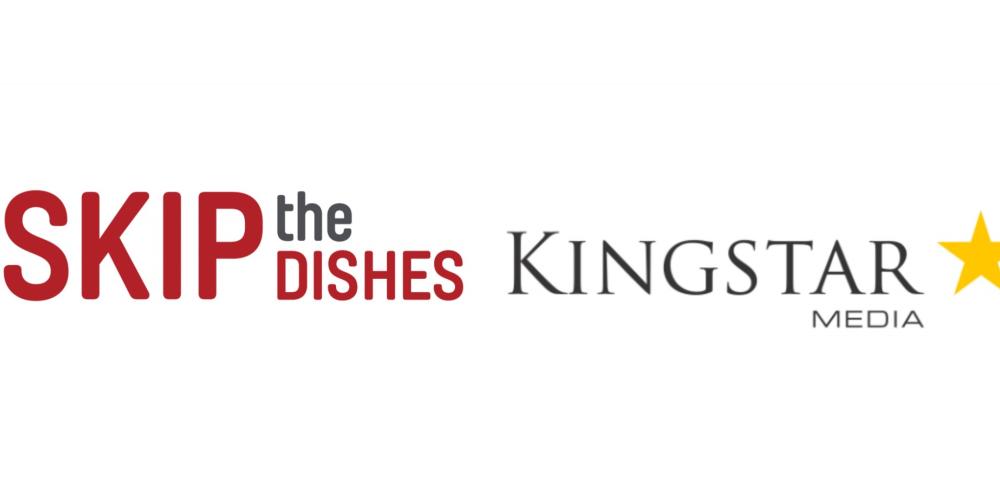SkipTheDishes & Kingstar Media: How Direct Response Advertising Expanded Food Delivery Network's Reach Across Canada

SkipTheDishes is an online food delivery network in North America connecting people with local restaurants and food couriers. The company, headquartered in Winnipeg, Manitoba, was founded in 2012 and has since expanded to 50+ cities across Canada. We had a chat with one of the co-founders of the company, Andrew Chau, about his team's experience buying TV and radio media as an online company.
KSM: For the past few months on the blog we've been talking about how online companies leverage offline media to drive brand recognition and online engagement. Could you start off by telling us why SkipTheDishes chose to run media on TV and radio as an online company?
Andrew: At the beginning of SkipTheDishes, we had generally been only growing online through digital media channels. Since we are local in 50+ markets in Canada, our goal was to reach more Canadians and more markets across the country, and we knew that mass marketing on TV and radio would be an effective approach
KSM: And why did you choose Kingstar Media to help you do that?
Andrew: Word of mouth brought us to Kingstar, thanks to one of our colleagues, and we knew that Kingstar Media has extensive experience with direct response marketing and a focus on driving ROI.
KSM: You ran different creatives online than you did on TV. Did you notice any strategy and targeting differences between the way your direct response campaign was set up versus your digital efforts?
Andrew: There is a similarity between the ways we approached our digital and TV campaigns. It was important to fit the creative with the medium and the target audience – it's really about how the audience is interacting with the ad itself. When it comes to TV and digital, we know that the online ad space is more fluid and flexible than TV since you can test and iterate on the fly. With TV, it's a larger upfront investment to plan and produce a TV spot (or several). Attribution models for online and offline media is another big difference. When it comes down to TV, a lot of the work is putting yourself in the audience's shoes, and understanding how audiences would react and what your target audiences would be watching in order to drive results.
KSM: Did you find that your overall online engagement was starting to grow or improve as you spent more time on offline media?
Andrew: Given that our company was growing steadily over the years before that, it's tough to contribute all success to one single channel. However, investing in offline media absolutely allowed us to continuously grow our online presence and brand profile for SkipTheDishes.
KSM: How would you outline the success of your direct response campaign in terms of what it did for SkipTheDishes?
Andrew: Our direct response campaign enabled us to greatly elevate our profile from a seemingly small app to an established, trusted Canadian food delivery network. SkipTheDishes grew more credible among Canadians, which we think is needed when you're dealing with apps and food, as well as money and people's information. Building this trust and reputation is always a work in progress as a company.
KSM: Did SkipTheDishes have any challenges when it came to your TV and Radio campaign that you ran into?
Andrew: I think tracking and measuring effectiveness is the core issue in most offline campaigns. Ensuring that we are reaching the right people at the right time. I think that's always important and I think that's a marketer's biggest challenge. For us, we did as much as we could to track performance, but at the end of the day, it's a brand investment. Spending on TV and Radio is to build a long-term, sustainable brand.
KSM: In your opinion, do you think TV is a promising storytelling medium based on how it helped SkipTheDishes' brand?
Andrew: Absolutely. TV boosted SkipTheDishes to become nationwide, and I think depending on the buy and what you are delivering through direct response ads, television is definitely a successful medium to establish brand presence.
KSM: Do you have any advice for other businesses who want to drive online results through offline media?
Andrew: Direct response on TV and radio are definitely larger investments. You have to commit to a creative and a minimum spend to make sure you get enough reach and awareness for your company. I believe you should wait until you've hit a certain size as a company where you are able to reach a certain number of customers. Much like many marketing campaigns, there shouldn't be a focus on one channel as the main strategy to drive results – there has to be a multifaceted approach to combine digital with offline channels, and connecting them all so they tell a story.
KSM: Looking ahead, are you continuing your direct response campaigns on radio and TV in 2018?
Andrew: Yes, we are planning on continuing with TV and radio in 2018, and we will be launching new campaigns – so stay tuned!

